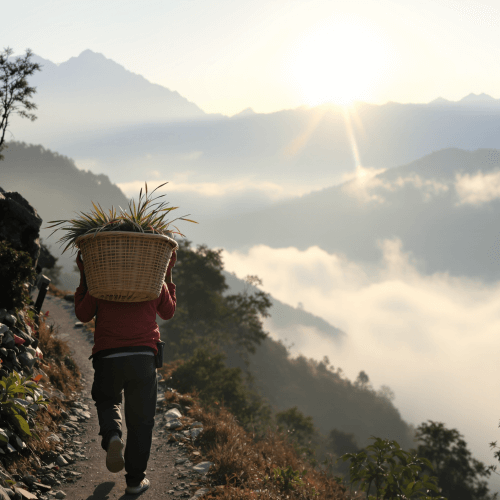
At five o'clock in the morning, when the first rays of sunlight begin to appear over the snow-covered peaks of the Himalayas and the valleys are still covered in thick fog due to high humidity, Nepalese collector Mohan Bandhari carefully sets off up a narrow mountain path. Every movement requires effort, but his steps are sure—after all, he has known this path since childhood.
At an altitude of 3,500 meters above sea level, where most people experience the first symptoms of altitude sickness, he spends the whole day carefully collecting local treasures: naturally occurring Himalayan herbs for the preparation of traditional Ayurvedic teas.
The Himalayas – Home to Snow and Medicinal Plants
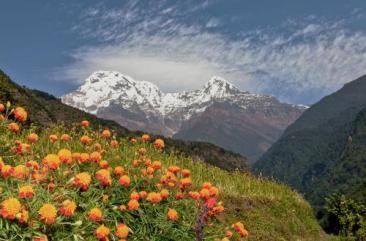
The mighty Himalayan mountain range forms a natural barrier against winds blowing from the south, which bring several months of monsoon season to Nepal in the form of abundant rainfall. As a result, the Himalayan slopes and valleys are home to more than 3,500 species of plants, which can be found both in the valleys and high up on the mountain slopes at altitudes of up to 5,500 meters above sea level. Several hundred of these have been used in Ayurvedic medicine for thousands of years, with some rare species found only in remote mountain locations.
Kantakari: The Bush of a Thousand Possibilities
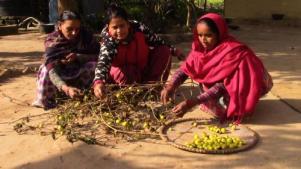 In Ayurveda, the roots, stems, flowers, and fruits of the abundant kantakari shrub, or Solanum xanthocarpum, have a wide range of medicinal uses. This inconspicuous shrub is a real treasure—each part of it has its own specific use. The roots are used differently than the leaves, and the flowers have their own effects. Such is the incredible variability and endless possibilities of nature.
In Ayurveda, the roots, stems, flowers, and fruits of the abundant kantakari shrub, or Solanum xanthocarpum, have a wide range of medicinal uses. This inconspicuous shrub is a real treasure—each part of it has its own specific use. The roots are used differently than the leaves, and the flowers have their own effects. Such is the incredible variability and endless possibilities of nature.
The Bark of the Crataeva nurvala Tree: A Gift from the Varuna Tree
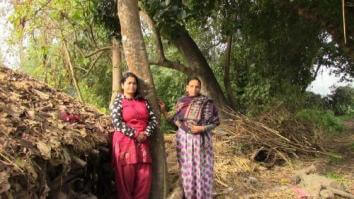
Another highly valued ingredient in Ayurvedic recipes is the bark of the Crataeva nurvala tree, known as varuna. This tree is considered sacred in local culture, and its bark is used for its diuretic effect in the treatment of kidney stones and urinary tract problems. Harvesting this bark is a ritual that requires not only technical skills but also a conscious approach. Harvesters never take too much so as not to jeopardize the tree's ability to regenerate its bark. Sustainability is a completely natural necessity for local people, stemming from their daily life in a natural environment and their need to preserve it.
Gokshura: Herb with Thorns
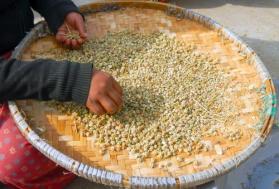 Gokshura is another widely used herb that is applied for kidney problems, to heal the urinary tract, and strengthen the entire body. However, it has sharp thorns, which makes it much more difficult to process—in short, truly valuable things always require more effort and patience. In Ayurvedic Gokshura tea, this herb, along with others, helps with back problems.
Gokshura is another widely used herb that is applied for kidney problems, to heal the urinary tract, and strengthen the entire body. However, it has sharp thorns, which makes it much more difficult to process—in short, truly valuable things always require more effort and patience. In Ayurvedic Gokshura tea, this herb, along with others, helps with back problems.
Amalaki from the Dang Valley
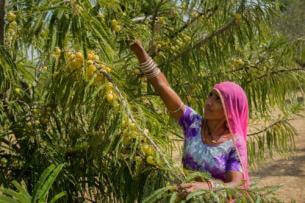
Properly dried amalaki fruit (Emblica Officinalis) is obtained in the Dang region, the second largest valley in Asia, which stretches between the Siwalik Mountains and the Mahabharat mountain range. This is where the fresh harvest of not only amalaki, but also the legendary herb tulsi (Holy Basil) and many other herbs comes from, which are then transported to Kathmandu. The journey of these plants is a story in itself – from the mountain slopes and valleys to the capital, where the experienced hands of Nepalese women await them.
Manjishta: Queen of Skin Care
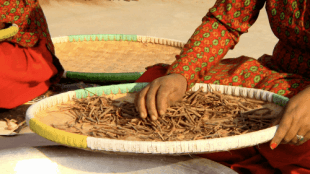 Manjishta (Rubia cordifolia) is one of the best herbs for skin care thanks to its antioxidant effects and ability to purify the blood. In the Manjishta herbal blend, its effects, together with those of other Ayurvedic herbs, are used to treat viral and bacterial infections. It is a very traditional Nepalese plant that is harvested in the mountainous regions north of Kathmandu. Its collection requires knowledge of mountain trails and the ability to distinguish high-quality plants from those less suitable for Ayurvedic use.
Manjishta (Rubia cordifolia) is one of the best herbs for skin care thanks to its antioxidant effects and ability to purify the blood. In the Manjishta herbal blend, its effects, together with those of other Ayurvedic herbs, are used to treat viral and bacterial infections. It is a very traditional Nepalese plant that is harvested in the mountainous regions north of Kathmandu. Its collection requires knowledge of mountain trails and the ability to distinguish high-quality plants from those less suitable for Ayurvedic use.
The Social Dimension of Mint Harvesting
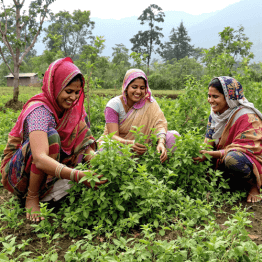
Regular harvesting of field mint is a popular activity among local Nepalese women due to its pleasant aroma, and it has almost become a social event. When women gather to harvest mint, it is not just work—it is a time of lively chatter, laughter, and passing on experiences to younger generations. The scent of freshly picked mint mingles with the sounds of their conversations, creating an atmosphere of peace, love, and relaxation. Field mint, or Mentha arvensis, is found in a wide range of Ayurvedic teas (e.g., Alochaka health tea and Pitta dosha tea) due to its wide range of uses.
Cooperation Between Man and Nature
While we mechanically pour ourselves coffee from an electric kettle in the morning to wake up and head out into a busy day in the city, Bandhari, somewhere at the foot of the Himalayan giants, bends over medicinal plants that are full of life energy.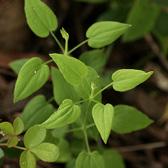
One of them is a climbing plant that an uninformed person would easily overlook. It is the aforementioned manjistha, or heart-leaved madder. This herb belongs to the Rubiaceae family, the same family as the coffee tree, and its decoction has powerful antioxidant effects on the body and acts as an adaptogen to strengthen psychosomatic health without any side effects.
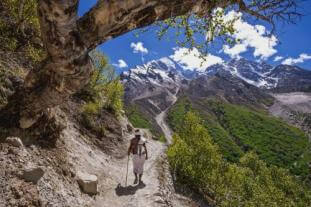 Bandhari's story is not unique. His family has been collecting Himalayan herbs for seven generations. When he was twelve years old, his grandfather took him on mountain trails for the first time and taught him to recognize individual plants, shrubs, and trees by the shape of their parts and the areas where they grow. "The mountains and jungles give us what we need," the old man used to say, "but we must know where to look, how to ask them properly, and how to listen to them."
Bandhari's story is not unique. His family has been collecting Himalayan herbs for seven generations. When he was twelve years old, his grandfather took him on mountain trails for the first time and taught him to recognize individual plants, shrubs, and trees by the shape of their parts and the areas where they grow. "The mountains and jungles give us what we need," the old man used to say, "but we must know where to look, how to ask them properly, and how to listen to them."
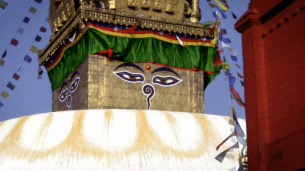 Today, at the age of forty, Bandhari and his family continue to practice this ancient craft. Every morning, before setting out on his quest for plants, he recites a sacred prayer as part of a daily ritual shared by the entire Nepalese society, which is based on Hindu-Buddhist traditions. He knows that Himalayan herbs are a precious gift of nature, carrying the healing energy of the world's highest mountains, and that his work serves others.
Today, at the age of forty, Bandhari and his family continue to practice this ancient craft. Every morning, before setting out on his quest for plants, he recites a sacred prayer as part of a daily ritual shared by the entire Nepalese society, which is based on Hindu-Buddhist traditions. He knows that Himalayan herbs are a precious gift of nature, carrying the healing energy of the world's highest mountains, and that his work serves others.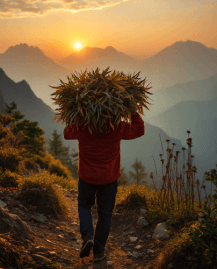
When he descends in the evening with a basket full of carefully collected plants, the sun slowly hides behind the peaks. This is how Himalayan herbs make their way from inaccessible heights to your home – with a story, a long-standing tradition, and above all, a deep understanding and endless love for nature.
And do you know how Ayurvedic teas are made from the Himalayan herbs that are collected?

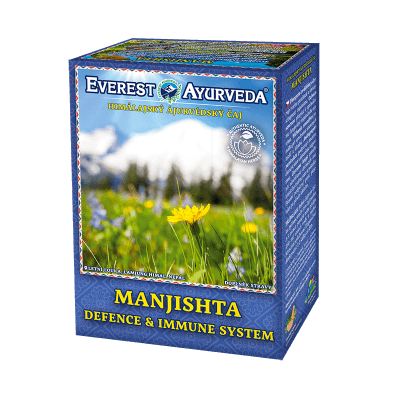 100 g
100 g  100 g
100 g 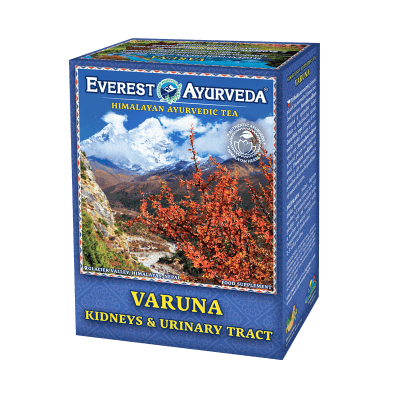 100 g
100 g  100 g
100 g 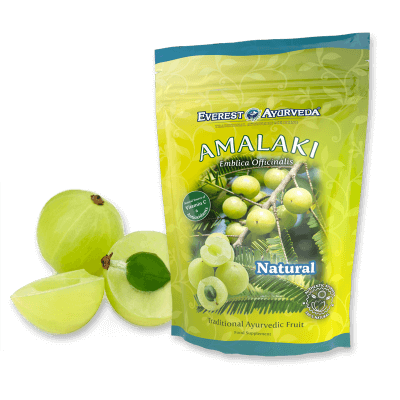 100 g
100 g 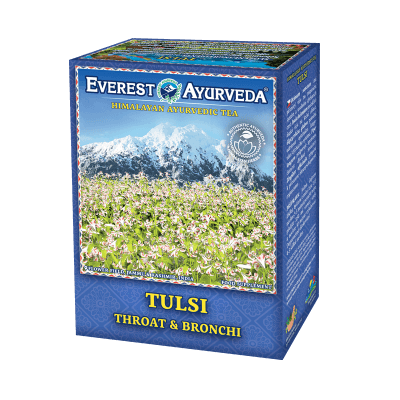 100 g
100 g